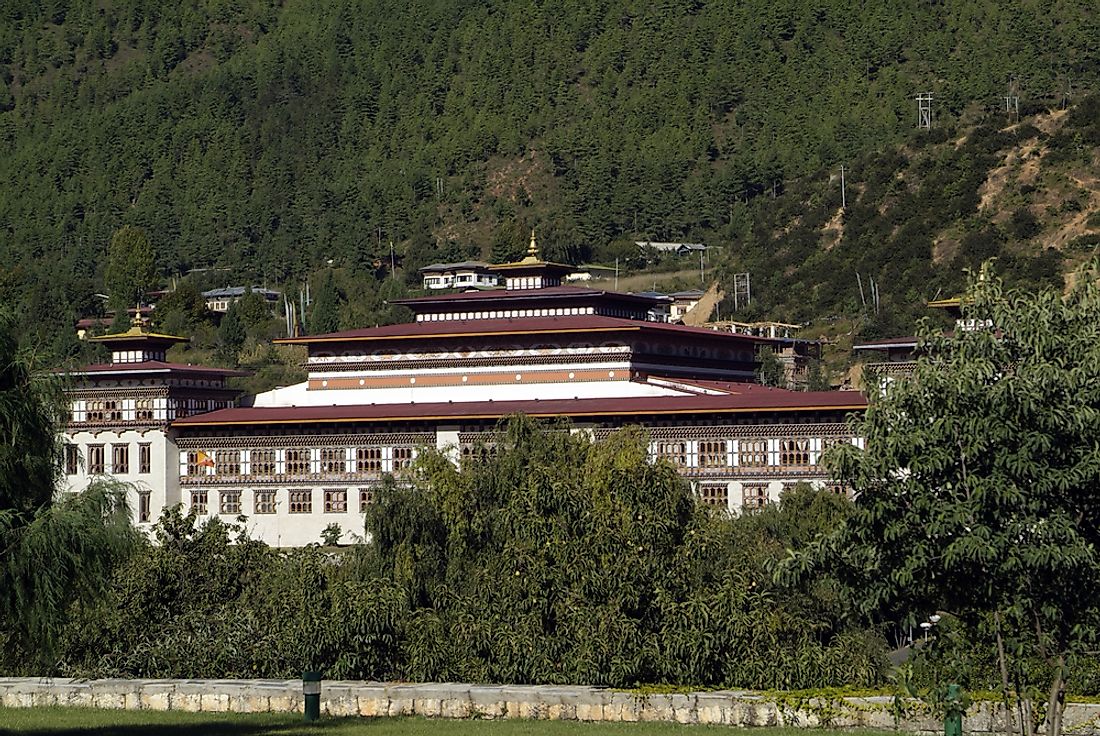What Type Of Government Does Bhutan Have?

Bhutan became a Constitutional Monarchy with the adoption of a modern Constitution in 2008. From 1907 to the 1950s, the nation was an absolute monarchy. The 2008 Constitution created a framework for a multi-party system of governance that is democratic. Bhutan has never been colonized, and it has had a long history of self-imposed isolation. Bhutan has a strong sense of sovereignty and seeks to govern its affairs.
Head of State Of Bhutan
The country’s head of state bears the title of Druk Gyalpo which translates to Dragon King. The position is hereditary, but the king retires at 65 years of age. The king’s reign can be cut short by a two-thirds majority vote from the legislature and after that a referendum where a simple majority in all of the nation’s twenty districts is required. The king’s closest advisor is the Je Khenpo who serves as Bhutan’s highest religious official. He leads the Commission for the Monastic Affairs or the Dratshang Lhentshog. The current Bhutanese King is Jigme Khesar Namgyel Wangchuck.
Executive Branch Of The Government Of Bhutan
The Bhutanese Prime Minister is recognized as the head of government. The political party which garners the majority of seats in the National Assembly gets to nominate the Prime Minister. The Prime Minister chairs the Lhengye Zhungtshog or the Council of Ministers. There are currently 10 Bhutanese Ministers in charge of various ministries and departments. The Lhengye Zhungtshog is mandated to plan and coordinate policies of the state and oversee their implementation, outline the State action goals and allocate the resources needed to achieve them, and represent the Kingdom on a national and global level. The council advises the king and is also answerable to him as well as the legislature. The king can seek advice from the Prime Minister and the Council of Ministers, especially on international matters.
Legislative Branch Of The Government Of Bhutan
The Bhutanese Constitution of 2008 stipulates that legislators should be elected through universal suffrage. The country’s legislature features an upper chamber (National Council) and a lower chamber (National Assembly). A maximum of 55 seats are available in the lower house representing constituencies. 20 non-partisan members represent each dzongkhag in the upper house in addition to 5 officials appointed by the king. The country’s Parliament retains the power to enact laws and keep the king and the ministers in check. The members of both of the houses serve for five years after which an election is organized.
Judicial Branch Of The Government Of Bhutan
The nation’s legal system borrows from the Anglo-Indian common law and the codes created in the 17th century by Zhabdrung Ngawang Namgyal. The Bhutanese judicial system as laid out in the 2008 constitution is made up of the Supreme Court and the High Court in addition to twenty Dzongkhag Courts. The courts of the first instance in 6 Dzongkhags are Dungkhag Courts while those in the rest of the 20 Dzongkhags are Dzongkhag Courts. Appeals made from lower courts are referred to the High Court and then to the Supreme Court. The Supreme Court also gives audience to constitutional questions and issues of national matters prescribed by the King. The King is responsible for the appointment of judges of the Supreme and High Courts.











